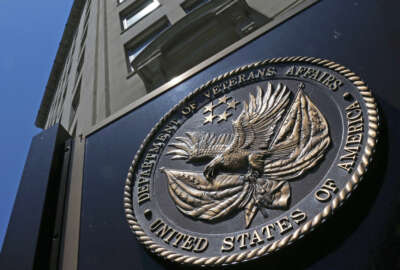REAL ID rule paves way for agencies to accept mobile drivers licenses
TSA is also giving agencies the flexibility to take a "phased approach" to REAL ID enforcement given the slow progress on transitioning to compliant IDs.
The Transportation Security Administration is ensuring mobile drivers licenses can continue to be used at federal buildings and security checkpoints when REAL ID enforcement begins next year.
Under a final rule published in the Federal Register today, TSA will allow individual states to apply for a temporary waiver of some REAL ID ACT requirements. Once approved, a waiver will allow state-issued mobile drivers licenses (mDLs) to continue to be accepted at TSA airport security checkpoints and federal facilities when REAL ID enforcement begins next May.
“The waiver established by this rule enables federal agencies to accept such mDLs for official purposes, defined in the REAL ID Act as accessing federal facilities, entering nuclear power plants, boarding federally regulated commercial aircraft and any other purposes that the [homeland security] secretary shall determine,” the rule states. “Any federal agency that chooses to accept mDLs for official purposes must procure a reader in order to receive an individual’s identity data.
TSA will grant a temporary waiver to states whose mobile drivers licenses “provide sufficient safeguards for security and privacy, pending finalization of emerging standards”
TSA is also working on more “comprehensive” requirements that will allow states to issue mDLs and mobile identification cards that comply with the REAL ID Act.
“After emerging industry standards and federal guidelines are finalized, TSA intends to issue a future rulemaking to set more comprehensive requirements for mDLs that will eventually replace the waiver provisions established by this rule,” TSA said in a statement.
TSA had previewed the waivers as part of the Department of Homeland Security’s burden reduction plan last year. TSA currently accepts mobile drivers licenses issued by 11 states. The technology to accept those mDLs is in place at 27 airports across those states.
Congress passed the REAL ID Act in 2005 to set a minimum set of standards for ID cards, such as drivers licenses. Under the law, federal agencies can only accept ID cards that comply with the REAL ID requirements starting May 7, 2025.
‘Phased approach’ to REAL ID
TSA earlier this fall also released a proposed rule that would allow federal agencies to “implement the card-based enforcement provisions through a phased enforcement plan.”
The agency noted that only about 56% of IDs in circulation as of January 2024 were REAL ID-compliant, as states have faced challenges in adopting the standards, including the COVID-19 pandemic.
The phased approach accounts for what TSA anticipates could be “last-minute surges in demand for REAL IDs” leading up to the May 7 deadline. The surges could “overwhelm states and result in backlogs and delays in REAL ID issuance,” TSA wrote in the proposed rule.
The rule would allow agencies to phase-in the REAL ID requirements over two years beginning next May. Agencies would be able to enforce the requirements “in a manner that reduces potential disruption to operations, reduces negative public impact, and supports a smooth transition to full card-based enforcement and the increased security benefits of REAL ID.”
Under the proposed rule, agencies would have to make their phased implementation plans public.
“This flexibility would allow these agencies to maintain operational efficiency; reduce security risks born from long lines, incidents, and distractions caused by additional identity verification procedures or turning away individuals who do not have acceptable identification; decrease potential public backlash to security personnel enforcing REAL ID; and limit potential negative impacts to the public,” TSA wrote.
Comments on the proposed rule were due Oct. 15.
Copyright © 2024 Federal News Network. All rights reserved. This website is not intended for users located within the European Economic Area.
Follow @jdoubledayWFED






